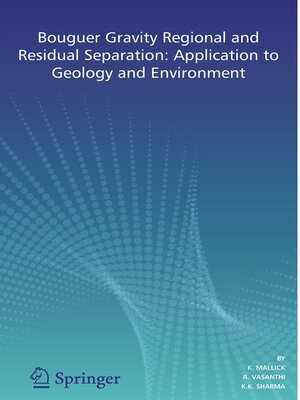Bouguer Gravity Regional and Residual Separation
ebook ∣ Application to Geology and Environment
By K. Mallick

Sign up to save your library
With an OverDrive account, you can save your favorite libraries for at-a-glance information about availability. Find out more about OverDrive accounts.
Find this title in Libby, the library reading app by OverDrive.



Search for a digital library with this title
Title found at these libraries:
| Library Name | Distance |
|---|---|
| Loading... |
The process of regional-residual separation in potential field is age-old. Broadly, there are two techniques for regional-residual resolution, viz., graphical and analytical. Both the techniques have their own respective shortcomings. In this book, the authors have described the technique based on finite element method in which only eight (or twelve) nodal observed gravity values are used for the regional computation, thereby eliminating the possible contamination of anomalous fields and also the technique does not assume an explicit model and physical properties like density of rocks etc. in the regional computation. The book discusses the advantages of this technique viz., it is not site-specific; the computation is independent of any prior assumptions as to the form and depth of shallow or deeper structures; it can handle data distributed at random or on a regular grid on the map space; and the neighbouring surveys join smoothly.
The book focuses on application of this new technique which has been demonstrated in different fields, such as hydrocarbon, minerals and groundwater, structural studies, earthquake and engineering studies and impact structures.







